Social Science is an information heavy topic to talk about. It’s an information heavy topic because to talk about any social issue without knowledge can make you sound foolish or all over the place due to how big the history can be for certain subjects. That is why good sources and databases are a must when researching a social issue. Which can be hard because there are many databases that have been deemed worthy enough for usage, you just have to be able to tell if information is accurate because at times the information can prove to be false. Take Wikipedia for example. Wikipedia is a go to for many people in the world but people sometimes fail to realize that the information on Wikipedia can be edited by anyone in the world. This is why I have learned to use the databases that are provided by Ramapo College.  The library at Ramapo offers many databases to use, such as, JSTOR, ProQuest, and Academic Search Premier and those are just a few databases. That’s not mentioning the other sources provided by the professor such as the Jane Addams Digital Edition, which holds newspapers and historical information for a variety of topics. But I usually just stick to using Ramapo College databases because they have everything I need. They have full text pdf, scholarly journals and sources, and they have the source already cited. I don’t ever have to worry about the credibility of the source I want to use because I know it’s credible. But questions I plan to ask my data are, how long has racism and discrimination been an issue on college campuses, how does racism and discrimination affect that colleges attendance rate and what is being done to combat this issue on campus. Finding data for some of these questions will not be easy at all. Proper wording of the question or the correct keys used will be important when finding data. I believe the most difficult question to find data for is how would racism and discrimination affect college attendance rates. This would be most difficult in my opinion because that kind of data is hard to attain. For that data to have any kind of statistical truth, people would have to confess to that being a reason why they make the choice to not attend a college. Not too many people would do that because not a lot of people like admitting that they are scared. So I believe a little cleaning would be needed for that question and data to be used.
The library at Ramapo offers many databases to use, such as, JSTOR, ProQuest, and Academic Search Premier and those are just a few databases. That’s not mentioning the other sources provided by the professor such as the Jane Addams Digital Edition, which holds newspapers and historical information for a variety of topics. But I usually just stick to using Ramapo College databases because they have everything I need. They have full text pdf, scholarly journals and sources, and they have the source already cited. I don’t ever have to worry about the credibility of the source I want to use because I know it’s credible. But questions I plan to ask my data are, how long has racism and discrimination been an issue on college campuses, how does racism and discrimination affect that colleges attendance rate and what is being done to combat this issue on campus. Finding data for some of these questions will not be easy at all. Proper wording of the question or the correct keys used will be important when finding data. I believe the most difficult question to find data for is how would racism and discrimination affect college attendance rates. This would be most difficult in my opinion because that kind of data is hard to attain. For that data to have any kind of statistical truth, people would have to confess to that being a reason why they make the choice to not attend a college. Not too many people would do that because not a lot of people like admitting that they are scared. So I believe a little cleaning would be needed for that question and data to be used. The process of analyzing and visualizing data can be difficult if you have no idea what you are doing. If you do not have the correct information to answer the question then the data you have would mean nothing. But the questions I plan to ask will cover a range of fields for me. I plan to ask questions that will give the history of the issue, that will tell me how the people feel about the issue, and will inform me of what is done to stop the issue.
The process of analyzing and visualizing data can be difficult if you have no idea what you are doing. If you do not have the correct information to answer the question then the data you have would mean nothing. But the questions I plan to ask will cover a range of fields for me. I plan to ask questions that will give the history of the issue, that will tell me how the people feel about the issue, and will inform me of what is done to stop the issue.
The sweatshops of the past, as displayed by the Tenement Museum, were smaller, family-owned businesses. A small handful of people would work on making ready-made garments for a large department store, with the department store having commissioned each small sweatshop for mass production of one item. Eventually sweatshops became larger factories, slowly evolving into what we know them to be today. A peak example of modern day sweatshops are the sweatshops found in the deeply corrupt country of Bangladesh, especially their capital of Dhaka. “Dhaka is one of the poorest, densest and most populous cities in the world.” Bangladesh imports a good portion of all raw cotton imports globally for its huge textiles industry, which makes up nearly all of the country’s exports. It comes after only China in clothing exports. The minimum wage has been $0.35 an hour for a long time, until a recent increase to a still meager $0.42 an hour. There is poor infrastructure, such as poor electrical work in many of these factories. There is improper storage of chemicals like fabric dyes. Workers often risk serious injury and/or disability compared to non-factory jobs in the area. Dhaka is especially known for its building fires and collapses which have killed hundreds and even thousands of factory workers. This has been compared to the 1911 Triangle Shirtwaist Factory fire, except that event resulted in reform, while many of these events have inspired much change.

Sweatshops of the past are very similar to sweatshops of today in terms of the poor conditions and infrastructure, frequent injury and accidents, low pay for workers, and common usage by large, affordable ready-made clothing brands. However the difference today is that sweatshops are no longer as prominent in wealthy, economically powerful countries. Sweatshops are most prominent in countries that are poorer and have much smaller economies. The developed countries still benefit from sweatshop labor, but they can afford to save their own population from the sweatshops while forcing it onto countries who can not afford the same privileges for their populations. The sweatshops of today are also often on much larger scales, with more technology than the sweatshops of the past. They can also produce larger quantities and varieties of products than the sweatshops of the past ever could.

Sweatshops hold no benefit for these workers, seeing as work outside the factories that has similar pay, at least in Bangladesh, has less hours and much less risk of injury or disability. Insatiable consumerism demands low prices and cheap goods, but the cost of that mindless materialism is the exploitation of people who are given little other option. We are responsible for how important this harmful industry has become to Bangladesh, and we are responsible for how the body count that the textile industry has collected there. It is up to us to hold these large clothing brands accountable.
Volodzko, David. “Bangladesh Is Burning And Sweatshops Are The Fuel.” Forbes, Forbes Magazine, 26 Mar. 2019, www.forbes.com/sites/davidvolodzko/2019/03/05/bangladesh-and-the-fire-next-time/#5147c1ad2ca1.

I fully anticipated difficulties in researching my topic. LGBTQ+ communities have not been advocated for until the 1950s and only recently has it been seen in a positive light. Policies like 600-20 also likely will skew information about LGBTQ+ in the military. This is not a topic that I can easily look up online and I was having difficulties finding sources on anything other than a general history. That being said, after a session with a school librarian, Christian Connor, I was able to find enough sources that half of my research is complete.

I was searching for mostly scholarly journals on the database Proquest, but the one specifically for social issues. I found numerous sources discussing LGBTQ+ in the military. This source specifically focuses on men in the military and how homophobia of the working class has increased or decreased over the years. It mentions world war 2 and includes personal accounts of gay service members. For another source, an interlibrary loan would be necessary. The abstract proves that the full text would likely be helpful. The source states that a study was done that found no negative effect on the military after the DADA repeal, proving that LGBTQ+ being open in the military has no consequences. I also decided to look up blogs and newspapers to get information on public view. One newspaper was a NY Times article published in 1989. It talks about the debate in the pentagon over homosexuals in the military. Despite some saying the report to accept homosexuals was not flawed, the pentagon rejected the report on this basis, claiming it was biased. Another more current article is perfect to show the opinions of legislators about the recent ban of LGBTQ members in the military. Congresswoman Hartzler said, “military service is a privilege, not a right.” 1 Finally, the last type of source I discovered was polls. I specifically used Gallup poll and I side with. There was a Gallup poll on how Americans are nearly evenly divided with slight favorability toward LGBTQ. In 1991, 50% compared to 43% still wanted to keep the ban on LGBTQ+ from joining the military. It will be interesting to see how it compares to modern-day opinion.

Connors helped me find databases to search, how to request interlibrary loans, and how to search the school’s library for books. I also learned a lot while looking at multiple American textbooks throughout history. I did not expect to find anything relating to LGBTQ+, especially in the older textbooks. Instead, I looked for words involving Eisenhower, McCarthy, the Vietnam and Korean wars and so on. I was also advised to look at military records in the textbooks. I was so focused on those words, I actually forgot to check the more modern books for word homosexual. Created Equal: A Social and Political History of the United States second edition, published in 2006, had multiple pages on homosexuals in history. This includes events like the Stonewall riot of 1969 and the first gay pride parade. I am not only using the research methods for this class but also my other classes, for example, Critical Reading and Writing. I learned where to search to find specific sources, what to search, and that interlibrary loans are my best friend.
Footnotes and Work Cited
Belkin, Aaron, Morten G. Ender, Nathaniel Frank, Stacie R. Furia, George Lucas, Gary Packard, Steven M. Samuels, Tammy Schultz, and David R. Segal. “Readiness and DADT Repeal: Has the New Policy of Open Service Undermined the Military?” Armed Forces and Society 39, no. 4 (10, 2013): 587. doi:http://dx.doi.org/10.1177/0095327X12466248. http://library.ramapo.edu:2048/login?url=https://search.proquest.com/docview/1432297745?accountid=13420.
By ELAINE SCIOLINOSpecial to The New,York Times. (1989, Oct 22). Report urging end of homosexual ban rejected by military: Pentagon rejects report critical of homosexual ban no security risk, says the military’s own research center. New York Times (1923-Current File) Retrieved from http://library.ramapo.edu:2048/login?url=https://search.proquest.com/docview/110207622?accountid=13420
Saad, Lydia. “Gallup Vault: Issue of Gays in Military Split Americans in 1993.” Gallup.com. Gallup, March 13, 2020. https://news.gallup.com/vault/214745/gallup-vault-issue-gays-military-split-americans-1993.aspx.
1 Stark, Liz. “Lawmakers, LGBTQ Groups Divided over Transgender Military Service.” CNN Wire. July 27, 2017. https://advance-lexis-com.library2.ramapo.edu:2443/document/?pdmfid=1516831&crid=43768b5f-e6e2-4e5e-8934-9d1552b04c7e&pddocfullpath=/shared/document/news/urn:contentItem:5P3W-KJY1-JBSS-S2G0-00000-00&pdcontentcomponentid=385157&pdteaserkey=sr5&pditab=allpods&ecomp=pp79k&earg=sr5&prid=a954a7e6-71be-4a51-a45f-45bf7926ccc2.
At the American Humane Association Convention on November 14th of 1906, Jane Addams gave a speech arguing that child labor is the greatest social issue of the time. Miss Jane Addams presented “Child Labor and Other Dangers of Childhood“, which she wrote herself this article consisted of her opinion on child labor, including examples she has seen and reasons on how labor negatively affects children. The American Humane Association focuses on the topics of children and animals. Individuals interested in the protection of these topics were allowed to attend the American Humane Association conventions and meetings, according to the New York Daily Tribune. Within her presentation, Jane Addams stated, “It is always difficult to see the moral dangers which threatened our generation, and to awaken the public interest in them

sufficiently to accomplish their removal,” as she emphasized the importance of the underlying issue of child endangerment. Beginning to touch on the topic, Addams explains how it is society’s job to protect children through the process of discovery, investigation, and mediating and helping. Society soon began to push this issue backwards and use children for labor by the age of twelve.
Having children so young work so intensely for so long, caused developmental issues for these children according to Jane Addams. Often children would work full days and lack the time necessary to complete their education; other times, children would work half day and be in school the other half. Addams made points that children who attend a full day of school develop further as they have the opportunity to play and develop their mind and bodies. Being forced into work so prematurely deprives the child’s ability to do such things. Physical strain, starvation, and lack of sleep often occurred in full-time working children and most were found to be abnormal.
As her speech continued, Addams gave an example a boy’s situation while she worked in the Hull House. This twelve year old boy was the man of his family. he worked full time to provide for his mother and his grandmother by bringing home weekly wages. After turning eighteen, this boy got mixed up in the wrong crowd and eventually broke; the boy had bottled up all of the pain, work, and weight that he had carried the past six years. He was unable to develop naturally because he was forced to grow up so fast.
Child labor often seems cheap and easy, but in reality it is seen as child cruelty as it drains the children physically and mentally. Owners of the business often see the situation in a light that makes them seem like a good guy. Addams explains one story of a girl who worked all day and slept in the factory as the workers rotated shifts. The manager viewed this as him helping by allowing them to rest, but virtually, he was endangering their wellbeing. Child labor can be viewed as child cruelty in many cases.
This paper by Jane Addams touches on the wellbeing of children and their treatment. It was written to inform and explain how these situations happen in real life. Being given at the American Humane Association Convention allowed Addams to reach an audience that shared the interest and compassion for helping protect children. 1906 was a progressive year for child labor and child abuse as the Children’s Prevention Society was formed and other groups brought the issue to attention. Child abuse has been a social issue for all of time and Jane Addams was one women who took a stand for the treatment of children.
Progressive Party Standpoint
Whenever a new political party arises, there is always a rush as the new party establishes and publicizes its standpoint on a variety of matters. During the 1912 election, there were six contestants running for the presidential office due to dissatisfaction with the republican and democrat parties. As the official ballot that has been preserved by Kenosha News shows, former president Theodore Roosevelt was running again in 1912 under the progressive party (1). Understanding this political environment is crucial for understanding documents written during that time period. For instance, Joseph P. Chamberlain’s letter to Jane Addams of Hull House about the progressive party’s stand on old age and sickness insurance is easier to understand with this political backdrop in mind (2). In the letter, Joseph P. Chamberlain, a member of the progressive party and a respected professor at Columbia University, urges Miss Addams, an American settlement activist, to, “call a meeting of your committee, together with the heads of departments of the Progressive Service and, if possible, the National Committees, to take up, broadly, the stand of the Party in regard to certain questions of policy and practicability”(2). In other words, Joseph P. Chamberlain wanted Miss Addams’ assistance in calling together a meeting of distinguished leaders to discuss the various aspects of old age and sickness insurance, like implementation and finances. The goal of this meeting was to help the progressive party take a position on these topics which they have been unable to do so far due to insufficient consideration and the tentative results that the Special Committee on Sickness and Old Age Insurance had produced. A few years after this letter was written, the Social Security Act, SSA, of 1935 was signed into law by President Franklin D. Roosevelt and The Opp Weekly New of Alabama wrote whole articles dedicated to explaining the various aspects of the Social Security Act to the masses (3). The articles explain how “old-age insurance benefits are based on the total wages received in covered employment between January 1, 1937, and age 65” (3). To clarify, the Social Security Act is a federal program where the government collects a portion of each individual’s wages in exchange for payments to these same individuals after retirement based on their income during employment.
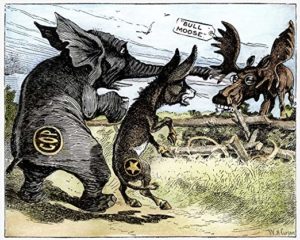
But how does the Social Security Act connect to, single-payer health insurance (My topic of choice)? The Social Security Act is a perfect example of mandatory insurance controlled by a department of the federal government that benefits citizens in their time of need. Furthermore, all that a citizen needs to be eligible is their social security card. On the other hand, the current health system has individuals choose between packages, hunt for doctors that are covered, then constantly worry about wither their medication or operation is covered. In essence, the Social Security Act is somewhat similar to the single-payer health plan where the individual will not need to worry about a complex system but will simply need to pay their taxes, which most people already do on a normal basis, and have their social security number on hand when they fall ill. However, as the Boston Globe states, that while “it does seem like the most efficient health care systems have a lot of government involvement….you still need a plan to get there” (4). There is still a lot of planning left on the part of the government as they must find a way to gather the funds required to run a federal healthcare system without raising taxes too much.
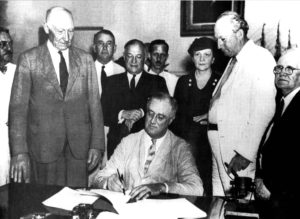
Footnotes:
- “28 Oct 1912, 2 – Kenosha News at Newspapers.com.” Newspapers.com, www.newspapers.com/image/595367940/?terms=president+Roosevelt+progressive+party.
- “Joseph P. Chamberlain to Jane Addams, January 10, 1914.” Jane Addams Digital Edition, https://digital.janeaddams.ramapo.edu/items/show/6929.
- “18 Aug 1938, 4 – The Opp Weekly News at Newspapers.com.” Newspapers.com, www.newspapers.com/image/553477924/?terms=old+age+insurance.
- “14 Sep 2017, A10 – The Boston Globe at Newspapers.com.” Newspapers.com, www.newspapers.com/image/444658684/?terms=single+payer.

Jane Addams, an advocate for immigration, gave a speech on October 28, 1907 at Carnegie Music Hall in which she expressed the many talents that immigrants offer to America despite the constraints they face. Jane Addams’ concerns for immigrants were depicted in her autobiography, 20 Years at Hull-House, where she asserts that immigrants and their traditions should be respected, and immigrants should be assisted in assimilating into American culture.^1 In her inclusive speech, which can be found here, she expresses that societal advancements are often gained from those who immigrate to the United States from other countries. She also asserts that by accepting and understanding the differences between native-born Americans and new immigrants to America that there “will be a material advancement in culture and appreciation of the finer crafts.”^2 Jane Addams’ messages of inclusivity also express that immigrants have the utmost potential, especially in material achievement of the crafts. She expresses despair that immigrants are forced into types of work that are below their capabilities being that they were skilled tradesmen in their native lands. Jane Addams describes the diverse trades immigrants are skilled in, ranging from metal workers to furniture makers and other creative forms. She advocates for them entering fields and types of work where they will best thrive so they reach their utmost potential as Americans.^3 Despite my topic being centered around economic disparities between classes across periods of American history, immigration relates to the economy. Immigrants increase the supply of labor in the nation. There are misconceptions that immigration is a disservice to the American economy, but as Jane Addams supports, immigrants add value to America and its workforce. Additionally, the Hull House in Chicago was the prototype for fixing the causes and symptoms of poverty, which only helped the economy.^4 Assisting those new to the country (immigrants) and central to the country (women and children) were root purposes of the Progressive Era.
Jane Addams gave this speech in 1907. The date is significant to the context because during this time, immigration restrictions were placed on Japanese individuals who were trying to migrate to the United States.^5 The U.S. was regulating immigration and approving migrants at their discretion while it was looked down upon to accept more immigrants into the country. This was a catalyst for the sentiments set against immigrants in general, which eventually resulted in forced assimilation in some cases since America wanted immigrants for forego their own cultures and become purely and distinctly American. Jane Addams argues that immigrants add value to the nation and should be valued for their skills, not ostracized within American society. The speech also places special focus on Chicago and the hardworking immigrants residing within the city. It does reflect Jane Addams living in a hull-house in Chicago; she asserts that Chicago is full of immigrants with amazing potential in material achievements, and she supports her assertion with their work done at Hull House.^6 In 1906, Chicago’s population grew with 64,000 immigrants.^7 The Hull House being in Chicago created a “haven of refuge” for immigrants as they sought better futures and better conditions than the ones they left.^8
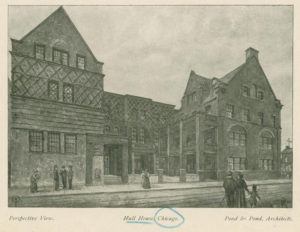
This speech took place at Carnegie Music Hall in Pittsburgh, Pennsylvania; it was the opening lecture of the University Extension Society.^9 This setting impacts its content because it was a venue for musical excellence, and Jane Addams giving a speech in a venue such as the music hall would only add to her purpose and audience of wealthy intellects who were in the positions of offering aid to the nation. Many strides were taken during the Progressive Era to help immigrants, women, and children, and Jane Addams’ persistence furthered the initiatives for better conditions and more promising futures for all inhabitants of the United States.
Bibliography
(^2, ^6, and ^9) Addams, Jane. “The Possibilities of the American Immigrant, October 28, 1907 (Excerpt).” Pittsburgh Daily Post, Jane Addams Digital Edition, October 28, 1907.
(^4 and Image 2) Friedman, Yael. “Carnegie’s Gift: The Progressive Era Roots of Today’s Branch Library.” Urban Omnibus, October 1, 2014.
(^3) “Give Aliens Chance.” The Pittsburgh Press (Pittsburgh, Pennsylvania), October 29, 1907. Page 8.
(^1) History.com Editors. “Jane Addams.” History.com. A&E Television Networks, April 16, 2010.
(Image 1) Michals, Debra. “Jane Addams.” National Women’s History Museum, 2017.
(^7 and ^8) “Ten Nights in a Bar-Room.” Newspapers.com. Chicago Tribune (Chicago, Illinois), January 20, 1907. Page 55.
(^5) “The New Immigration Law.” The Hawaiian Gazette (Honolulu, Hawaii), March 1, 1907. Page 6.

Jane Addams (1860-1935) was a peace activist who was the first American woman to win the Nobel Peace Prize in 1931. Her involvement was “instrumental in successfully lobbying for the establishment of a juvenile court system, better urban sanitation and factory laws, protective labor legislation for women, and more playgrounds and kindergartens throughout Chicago.” (5) It was during the first World War, that Addams began promoting international peace. Since her time, she has become known as the “most loved woman in America” while also “the most dangerous woman in America” because of how powerful her peace efforts were.
Though mental health has a history of being a taboo topic, it is still extremely interesting to be able to see how it was discussed in earlier times. When going through the “Jane Addams Digital Edition” it allowed me to find numerous primary sources that clearly depicted what mental health was thought of and also how those that suffered from a mental health disorder were viewed.
However, though many viewed mental health as a disease and ‘bad karma’, Addams, who was a social reform activist, supported the work that was being done in terms of bringing awareness. She wrote a letter in November 1911 to Clifford W Beers, who was the secretary for the National Committee for Mental Hygiene, praising him and members of the committee for taking upon such an important task. First Addams addressed how this committee’s focus was to help those with mental health disorders, describing their mission as “the prevention of insanity and the amelioration of the condition fo the insane.” (1) Though calling someone with a general mental health disorder as insane is quite unacceptable nowadays, it was the norm in the early twentieth century. Addams continued, however, “I can imagine nothing more valuable to any community than the carrying out of your well-considered plans.” (2)

To further demonstrate the general opinions of mental health in this time period, there was another letter, this time being written to Addams in 1917, by Carolyn Sturgis. In this letter, Sturgis writes how those that are affected by mental health ought to be arrested, otherwise, they cannot be helped. Sturgis writes in the letter to Addams, “just as you yourself will stand by what you think [is] right, so do I.” (3) Sturgis continues, “Of course the tendency of our enlightening age is to treat such people more and more by “passive restraint” but it is not possible to treat them until they have been arrested.” (4) This letter was truly eye-opening to see how mental health was viewed as something that in a way, possessed people, because the emotion demonstrated in letters and other historical documents of earlier time periods, do not necessarily demonstrate hatred, but rather fear.
Overall, mental health has never been an easy topic to discuss and it was not any easier in earlier centuries. However, social reform activists, like Jane Addams herself, helped further drive the movement forward into a more positive light. In the times I have researched mental health for other projects I have worked on, I had never come upon Addams’ involvement in the field, however, it was refreshing to see her true passion of helping others.
References:
- Addams, Jane, “Jane Addams to Clifford W. Beers, November 9, 1911,” Jane Addams Digital Edition, accessed March 4, 2020, https://digital.janeaddams.ramapo.edu/admin/items/show/3524.
- Ibid.
- Sturgis, Carolyn, “Carolyn Sturgis to Jane Addams, June/July 1917,” Jane Addams Digital Edition, accessed March 4, 2020, https://digital.janeaddams.ramapo.edu/admin/items/show/13160.
- Ibid.
- Michals, Debra. “Jane Addams.” National Women’s History Museum. https://www.womenshistory.org/education-resources/biographies/jane-addams.
Frederick H. Deknatel, born September 26, 1864 in Paris, France and died April 15, 1949, lived most of his life as the president of a small hardware manufacturing firm. After the death of his wife, he moved to Hull House and became the head of the Boys’ Club, and later auditor and trustee. Deknatel most likely met Jane Addams after moving into Hull House and he worked as a secretary for Addams during his stay. He helped plan her events and correspond with those who wanted her to give speeches.

This relationship explains why Deknatel came to the defense of Addams when people began attacking Addams for supporting lynching of African Americans. Deknatel wrote a letter to the Editor of the New York Tribune, explaining how Addams felt about them writing about how Addams is in favor of lynching and coming to her defense against that being true. The letter states, “Sir: Miss Addams’s attention has been called to an article in your paper in which, among other misrepresentations, she is quoted as being in favor of the lynching of negroes. It is difficult to understand how sentiments so completely at variance with her opinions could be ascribed to her, in view of the fact that she has not only often spoken and written against lynching, but is a non-resistant in principle, and does not believe in the death penalty or the use of force in any form.” Deknatel wrote the letter January 6, 1902 in Chicago, and when looking at history reports lynching was a big thing in the late 1800’s and early 1900’s. African Americans were being lynched for anything as long as a white person deemed it reason enough. The ABA article, A History of Tolerance for Violence Has Laid the Groundwork for Injustice Today states, “Between 1868 and 1871, a wave of terror swept across the South, resulting in the deaths of thousands of African Americans—some killed merely for failing to obey a white person.” Lynchings were also a way white people to establish dominance over minorities as the article also states, “Lynching soon emerged as a primary tool to enforce racial hierarchy and oppression while terrorizing black people into accepting abusive mistreatment and subordination.” And with both Deknatel and Addams being white people, for there to be an article in the world stating how Addams supported lynchings is not good for her brand and what she wants to help accomplish. It turns her followers against her and makes her look like a fraud, when in reality is fighting to help make society better. Wikipedia states, “Jane Addams (September 6, 1860 – May 28, 1935) was an American settlement activist, reformer, social worker,[1][2] sociologist,[3] public administrator[4][5] and author. She was a notable figure in the history of social work and women’s suffrage in the United States and an advocate for world peace.”/arc-anglerfish-arc2-prod-tronc.s3.amazonaws.com/public/RZIRKRUAHVF2XMBRGNMD6HVOKM.jpg)
So the letter was written to defend Jane Addams and protect her brand and image in the community. The letter was also written by a friend and associate.
“Jane Addams.” Wikipedia, Wikimedia Foundation, 29 Feb. 2020, en.wikipedia.org/wiki/Jane_Addams.
“A History of Tolerance for Violence Has Laid the Groundwork for Injustice Today.” American Bar Association, www.americanbar.org/groups/crsj/publications/human_rights_magazine_home/black-to-the-future/tolerance-for-violence/.
“Frederick H. Deknatel to the Editor of the New York Tribune, January 6, 1902.” Jane Addams Digital Edition, digital.janeaddams.ramapo.edu/items/show/15812.
“Deknatel, Frederick H. (1864-1949).” Jane Addams Digital Edition, digital.janeaddams.ramapo.edu/items/show/253.

Erving Winslow was an author and activist that lived from 1839-1922. After he graduated from Harvard, he served on the United States coast survey and the United States sanitary commission during the Civil War. Some of his works include The Anti-Imperialist League: Apologia Pro Vita Sua and Neutralization: America’s Opportunity. Winslow was involved with the anti-imperialist league to try and prevent America’s annexation of the Philippines. A few others who were also involved included Jane Addams, Mark Twain, and Andrew Carnegie. Of course, this group was not supported by those who wished to Annex other countries. One newspaper article written in 1911 discusses how the secretary of the interior of Philippine Insular government attacks the league and Winslow specifically. He states that Winslow, who was the secretary of the league with making false claims to the public. After America won the Spanish-American war in 1989, the Treaty of Paris was signed where Spain ceded its control over the Philippines. Nationalist groups in the Philippines began to fight against America leading to the Philippine-American war that killed 20,000 Filipino troops and 200,000 civilians as well as 4,300 American troops. After the Treaty of Paris, the anti-imperialist league began to decline and eventually disappeared in 1920.
In a letter to Jane Addams written on August 7, 1912, Winslow criticizes Addams for supporting Theodore Roosevelt. Roosevelt fought in the Spanish-America war and when he became president in 1901, he agreed with his predecessors that Philipinos were incapable of self-government. Unlike previous presidents, he created a ceasefire in 1902 to stop the bloodshed between the American military and nationalist Philipino groups fighting for independence. Winslow claims that supporting Roosevelt is contradictory for “those who are laboring for social welfare” because the effects of the war “increase of the navy, the fortification and appropriation of the Panama Canal and the hypocritical support of women’s suffrage to be decided by the votes of women instead of a natural right.” 1
This source is not directly relevant to the topic of LGBTQ in the military, but it is interesting to see how a society can react to imperialism and war. I am interested in how support or anti-war attitudes may have affected the LGBTQ community later in history. For example, if there was a war happening and you needed more members, it may be likely if you were homosexual this was ignored. If the public no longer wishes for war, or if the country is not involved in a conflict, being part of the LGBTQ community might become more of an issue.
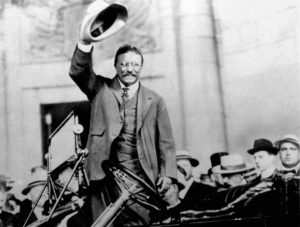
Again, the source was written in 1912. It makes sense that Winslow wrote to Addams during this time because Theodore Roosevelt was running for President. His Bull Moose Party’s foundation was defined as progressive. He called for “direct election of U.S. senators, woman suffrage, reduction of the tariff, and many social reforms.” 2 One can infer that Addams likely supported Roosevelt due to his platform coinciding with her beliefs. Roosevelt was not elected though, instead, Woodrow Wilson became president. Winslow wrote Addams numerous times about the Philippines and wrote three letters in 1912 about the race for president. This shows that on behalf of the Anti-imperialist league, he was actively trying to change Addams’ mind throughout 1912.
The letter was written in Boston, which was where Winslow lived. His environment may have influenced his beliefs. For example, some of his fellow league members may have lived near him, like Andrew Carnegie who also lived in Massachusetts.
The fact that it was a letter to Addams shows why he tried to convince her that Social workers should not support Roosevelt. The tone of the letter was chastising, but not extremely harsh. For example, he ended his letter signed with “your obedient servant” 3 His purpose is reflected by his wording, his background, and the situations happening during his time period.
Work Cited and Footnotes
1 and 3 “Erving Winslow to Jane Addams, August 7, 1912.” Jane Addams Digital Edition. Accessed March 1, 2020. https://digital.janeaddams.ramapo.edu/items/show/5221.
2 “Teddy Roosevelt Nominated as Bull Moose Candidate.” History.com. A&E Television Networks, February 9, 2010. https://www.history.com/this-day-in-history/teddy-roosevelt-nominated-as-bull-moose-candidate
“American Anti-Imperialist League.” American Anti-Imperialist League – New World Encyclopedia. Accessed March 1, 2020. https://www.newworldencyclopedia.org/entry/American_Anti-Imperialist_League.
History.com Editors. “Andrew Carnegie.” History.com. A&E Television Networks, November 9, 2009. https://www.history.com/topics/19th-century/andrew-carnegie.
“Philippine-American Conflict.” TR Center – Philippine-American Conflict. Accessed March 1, 2020. https://www.theodorerooseveltcenter.org/Learn-About-TR/TR-Encyclopedia/War-and-Military-Affairs/Philippine-American-Conflict.
Surveys are a very effective way to collect data while also saving time and even money. Surveys can also be sent out to people across the country and even the globe, which helps get a wider basis of answers and more accurate, representative data. Surveys are usually online or through mail, which is convenient for those on the go or who are rushing to complete them. Other traditional methods, such as focus groups and interviews, can discourage people from participating because they are seen as a huge time consumer and in today’s society, as it has always been, time is money. Surveys are very practical, especially with today’s technology (for example, Google Surveys). Though the effortless forms of surveys, whether in person or online, is seen universally as a good thing, those taking the surveys will obviously not share the same world views, and their answers will differ. Even two siblings taking the same survey could have completely different answers based on their personal beliefs, and the exposure to the topic(s) they are being asked about. Gender does play a role in how we see the world. As females, we are portrayed as weak and very dependent on men. We care immensely about our rights and issues related to us, such as domestic violence. Men are more focused on their own gender problems, which they do not have a lot of. Unless they are an activist or just very woke, there is a slim chance that they will think certain issues are of importance. The same theory applies with race and social class, in that the issues that apply to certain people will matter more to them than those issues that don’t. For example, those who can not afford health care are most certainly fans of universal/free healthcare, while those who can afford it with ease probably don’t spend as much time thinking about the issue. Those who struggle to make ends meet will most likely fight harder for more rights and help for the poor than those who can spend money with ease. Our race, gender, and social class affect the way we view the world and in turn, affect how we would answer potential survey questions.
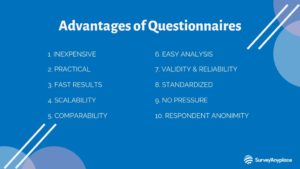
This graphic, taken from the SurveyAnyplace Blog, (1) shows the most basic advantages of surveys. With the anonymity of surveys, such as the one we made for class, people are less afraid to speak their minds. When a survey taker knows that their name or a certain characteristic of themselves will be associated with the answers they give, they are less likely to speak their true mind, especially if the opinions they hold are controversial. When the surveys are anonymous, there is a higher chance of the questions being answered completely and honestly, which helps the data remain accurate. Though, as stated before, those of different genders, races, and social classes will have different answers, the style of surveys allow those answering them to speak their true mind and save time while doing it.
References
[1] “10 Advantages and Disadvantages of Questionnaires.” Survey Anyplace, August 20, 2019. https://surveyanyplace.com/questionnaire-pros-and-cons/.


